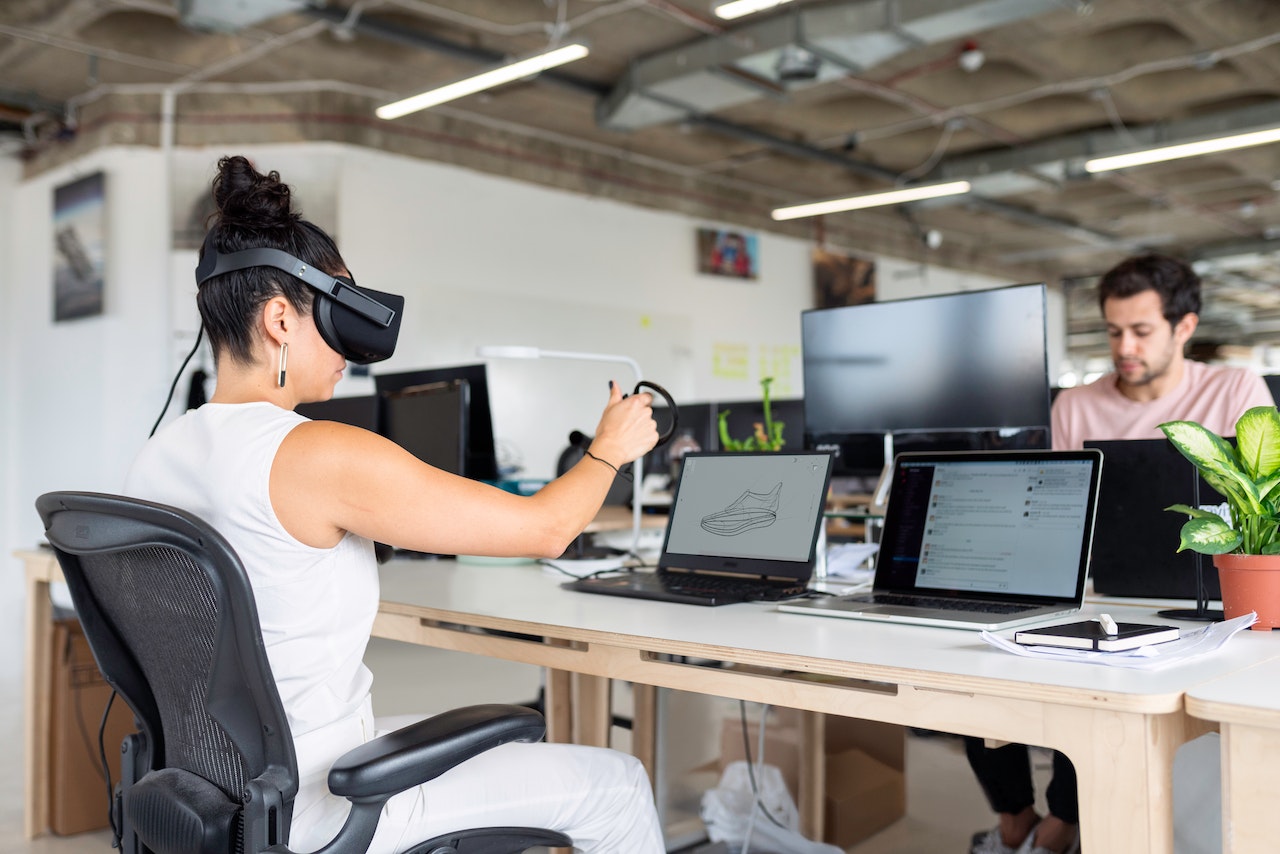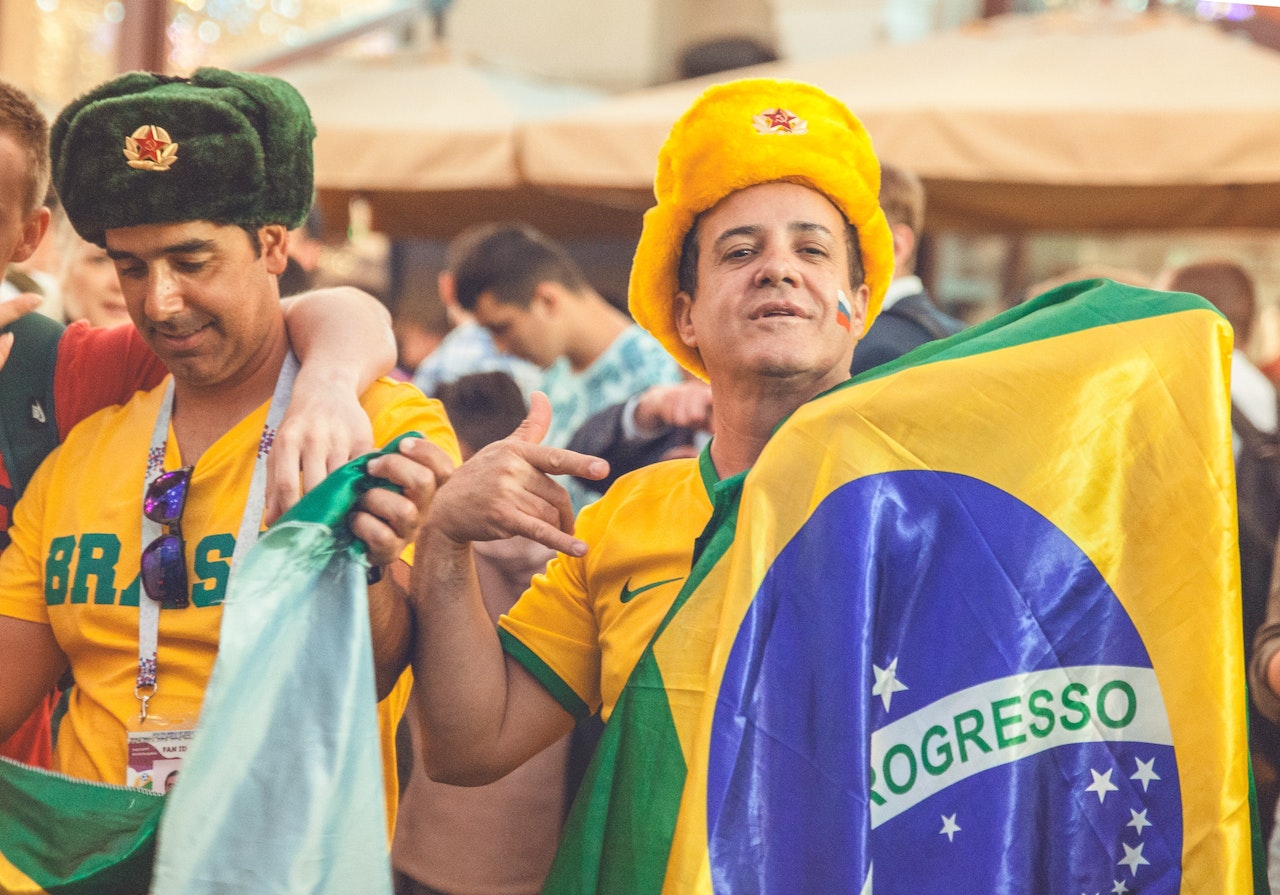Examples of successful virtual reality marketing
Published

If you've never delved into the world of virtual reality (VR), don't worry: you'll undoubtedly have the opportunity to do so soon. Around 75% of the world's biggest brands have already integrated VR into their marketing strategy - and that's no wonder, because it's a powerful marketing tool.
In the most obvious sense, it is powerful because it allows us to experience certain products up close. But if we look at it more closely from an advertising perspective, there is a lot to be said when it comes to improving buyer awareness, speeding up the buying process, and providing shoppers with more personalized choices, to name a few things.
Below, we'll provide an overview of the basics of VR and tell you about some of the biggest and boldest advertising strategies companies have recently implemented using this remarkable technology.
What is Virtual Reality and how does it work?
You'll be hearing the terms virtual reality, augmented reality and mixed reality more and more in the near future - let's break these terms down.
- Virtual Reality: This is a general term for any type of experience that essentially transports the user to another world or dimension. It can refer to fully digital worlds or to worlds that contain a mix of real and virtual.
- Augmented reality: This is a term for incorporating content into the real world, e.g. B. using your iPhone's camera. The most famous example of this is Pokémon Go.
- Mixed Reality: This is a combination of real and digital content, sometimes consisting of two types of videos essentially layered on top of each other. In this example, the virtual and real things interact with each other.
Now let's take a look at some innovative examples of major marketing and PR initiatives that delivered exciting, immersive experiences to customers and created a lot of buzz in the process.
1. New York Times
There is no doubt that VR is a great medium to tell a visual story. A few years ago, The New York Times gave all of its subscribers a pair of Google Cardboard glasses to watch a VR movie, and then repeated the process a few more times with different films, only giving these glasses to the most loyal customers were delivered, essentially serving as an incentive or reward for brand loyalty.
The films particularly appealed to intellectuals and philanthropists, who are likely to be part of the NYT's audience: Seeking Pluto's Frigid Heart offered space enthusiasts a chance to explore the planet up close, and the documentary The Displaced offered an intimate look at the way , how children around the world have been displaced by war.
The emotional intensity this experience gave viewers would have strengthened brand loyalty for all three products: the glasses, the New York Times, and the featured films.
2. The outdoor niche
Renowned hiking shoe brand Merrell created a unique experience with TrailScape, a multi-sensory 4D hiking experience, as part of the launch of its most innovative hiking shoe. It was the first time that a company called a special technology Oculus Rift which included tactile elements of walking on various surfaces and even included obstacles such as falling rocks that participants had to navigate around.
This film premiered at the Sundance festival, which added another marketing element, the combination of outdoor gear and film. It was a completely new experience that participants will undoubtedly remember for a long time.
The North Face did something similar, offering participants the opportunity to hike through Yosemite National Park and Nepal. This type of immersive experience is brilliant for such a specialized market. People could feel what it was like to go on a journey of discovery, which motivated them to actually have a reason to buy the shoes - or something similar from the Merrell brand, of course.
3. The DIY niche
Home improvement store Lowe's has launched a virtual reality initiative that allows customers to enter a holoroom to see what their home will look like after desired improvements. It also worked with Microsoft to create an experience where customers can select designs and products to see what they might look like in their own home. An integration of customers' Pinterest boards will also follow shortly.
The advantage of these types of initiatives is that the VR system collects customer data as part of market research, and this is incredibly valuable data to guide a marketing strategy.
IKEA also has a VR-based app that allows customers to place furniture around their home to decide on the look, feel and fit. This is probably one of the simplest, most accessible and practical VR applications we've seen to date.
4. Travel
A few years ago the British travel agency tried Thomas Cook launched a campaign that allowed travel agents to experience specific trips in order to promote them to their customers: "Try Before You Fly". While this campaign wasn't necessarily successful, it's a good example of how we can use VR marketing in both B2B and B2C tourism. This is a growing trend today as many companies not only promote tourism, but also accommodations are able to provide an up-close experience of what it feels like to stay in their spaces.
5. Toms shoes
Toms is a shoe company known for its philanthropy. They give away a pair of shoes for every shoe purchased. Their genius VR tool was to create an experience where they take a trip to Peru and give someone a shoe. Customers were able to experience this in store. This is a great example of using VR to address an emotional, feelings-based marketing campaign, which can be the most effective way to sell a product at the best of times.
6. McDonald's Happy Goggles
Leave it to the world's largest fast food company to introduce a simplified VR experience that's completely accessible to children under 12. McDonald's has managed to create a Happy Meal box that easily converts into a VR headset. The initiative was created based on Google Cardboard to give people VR experiences in a simple, affordable format. The boxes even came with instructions on how to build them yourself at home.
By offering consumers the opportunity to build their own VR headsets and making them easy enough for children to use, McDonald's has, in at least one example, paved the way for this technology to be seen as simple, fun Tool becomes available to the masses and not as an incredible high-tech investment. It's also a wonderful example of reuse.
7. Volvo test drive
Probably one of the best uses of VR is to test drive a car when there isn't a dealership nearby, and that's exactly what Volvo did a few years ago. They keep releasing updated versions which can be easily downloaded on your mobile phone. This is another Google Cardboard initiative that is also available as a downloadable app (even if you don't have Google Cardboard).
This is a brilliant marketing move because it not only made Volvo known (again) for something innovative, but also accessible. They now offer a "weekend getaway" version of the app, which includes 360-degree landscapes and gives adventurers the opportunity to cement the connection between "adventure" and "Volvo" in their minds, which is particularly useful given the practical element of the Volvo Branding may have never happened before.
The core statements
Giving users an immersive experience allows them to form a new connection with a product and make new associations with experiences they may never have had before. Where a person might once have thought of Merrell hiking boots as practical, weatherproof boots for the winter, they may now associate them with the hiking trip of a lifetime, as well as the Volvo adventure.
All of these examples are so different, but they all do one thing well: they immerse the audience in an incomparable and unforgettable experience. Now you've seen the impact VR can have on an advertising campaign, touching on a certain level of personal experience that you might never experience otherwise, or perhaps something similar to something you're passionate about but only experience occasionally.
VR offers consumers the opportunity to redesign their experience with a product while getting closer to the experience the product offers. Today's VR-based campaigns prove that, more than ever, innovative marketing strategies are about offering a unique, immersive experience - something that touches people's lives and hearts in a whole new way.








